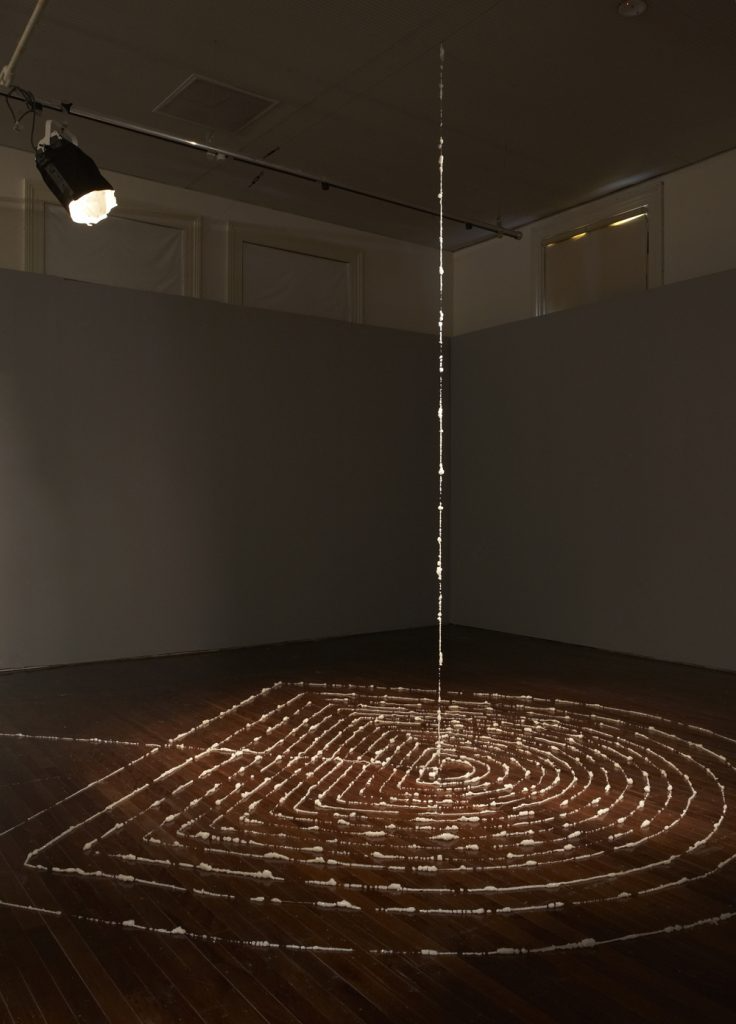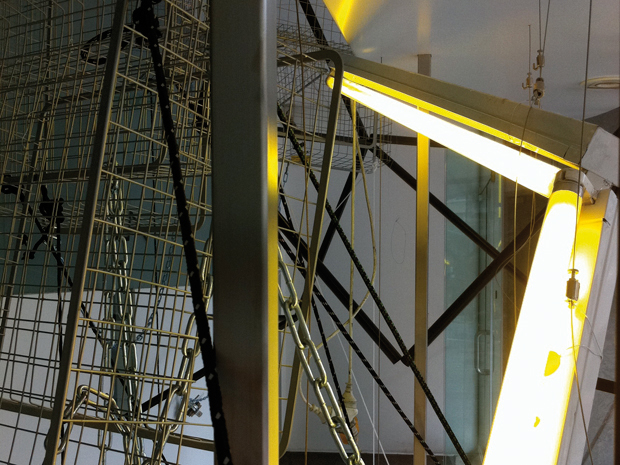Emerging Projects

When
14 May 2011 -
25 June 2011
Location
4A Centre for Contemporary Asian Art
181-187 Hay St, Haymarket
Three solo exhibitions by emerging artists, Shalini Jardin, Tracy Luff, and Cyrus Tang explore the transformative potential of diverse materials including human hair, cardboard and living protozoa. By manipulating these sometimes strange materials, the artists question the fragility of self, family, and the value systems which define ourselves and others.
Sydney based artist, Shalini Jardin, includes live protozoa which interact with images of her own drawings. Based on her readings of vedic texts, these delicately rendered drawings of hybrid human and animal combinations have been scaled down to fit on microscopic slides onto which droplets of living protozoa are added. The installation presents a large-scale projection of these living beings engaging with Jardin’s drawings. The work is playful, and the audience experiences the chaotic interaction between real and constructed forms. Jardin creates a microscopic view of how human, animal and non-animal entities interact and influence our values and belief systems.
Based in Goulburn, Tracy Luff transforms the mundane material of cardboard into beautiful otherworldly objects and environments. Her large-organic forms are both familiar and strange, and enable Luff to transcribe her personal experiences into an environment that an audience can literally walk through. On first arriving to Australia from Malaysia and moving to NSW, Luff became immediately aware of the difference in flora and landscape. Her cardboard forms are in part an emotional response to the constantly changing social, emotional and natural landscapes surrounding her.
Born in Hong Kong and now working in Melbourne, Cyrus Tang’s object-based works usually self-destruct over time due to the fragility of their material. For her exhibition at 4A, includes Momentary Gleam, a length of hair made from combining strands of her family’s hair with her own. Hair is seen as both abject and protecting, and sometimes sexual. It also continues to grow after death whilst the rest of the body begins to perish and decay. Tang’s use of hair is a way to connect with her own family – to understand their separation over distance and the complex emotional ties that bind them. To the artist, this is a symbolic process of purification. Once removed from the solution, the residue hardened around the 4-metre strand of hair forming a jewel-like encasing.
